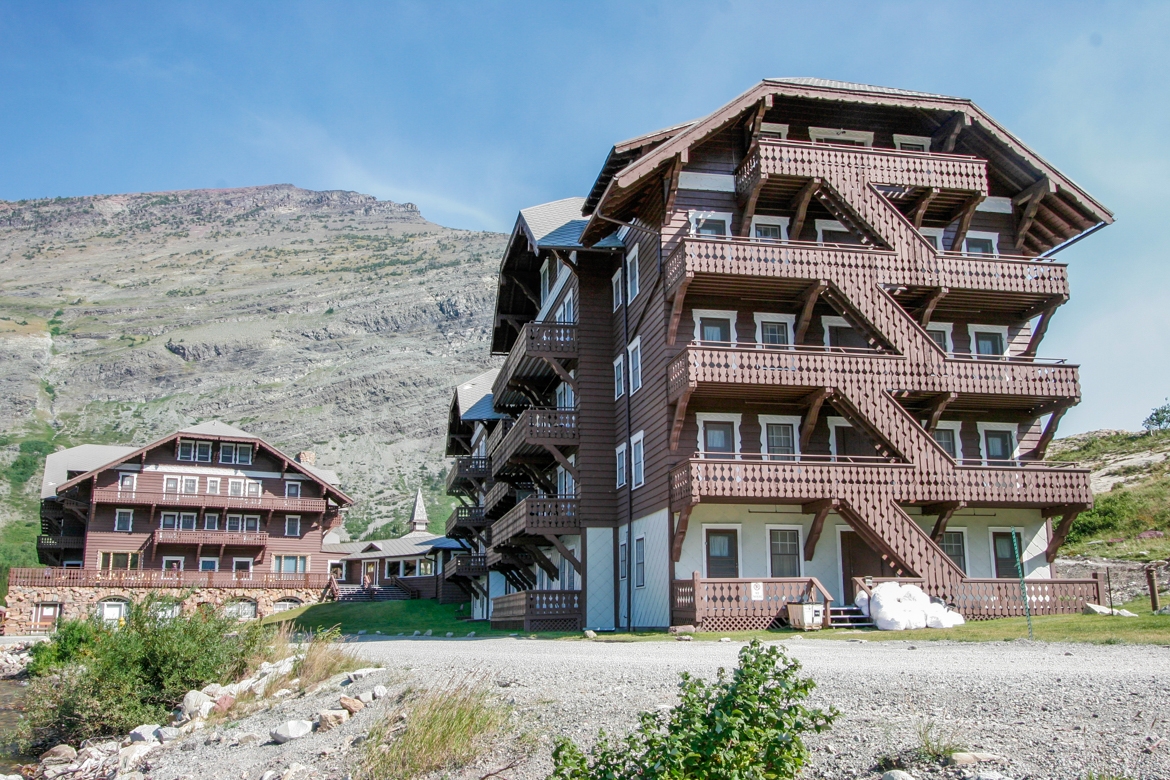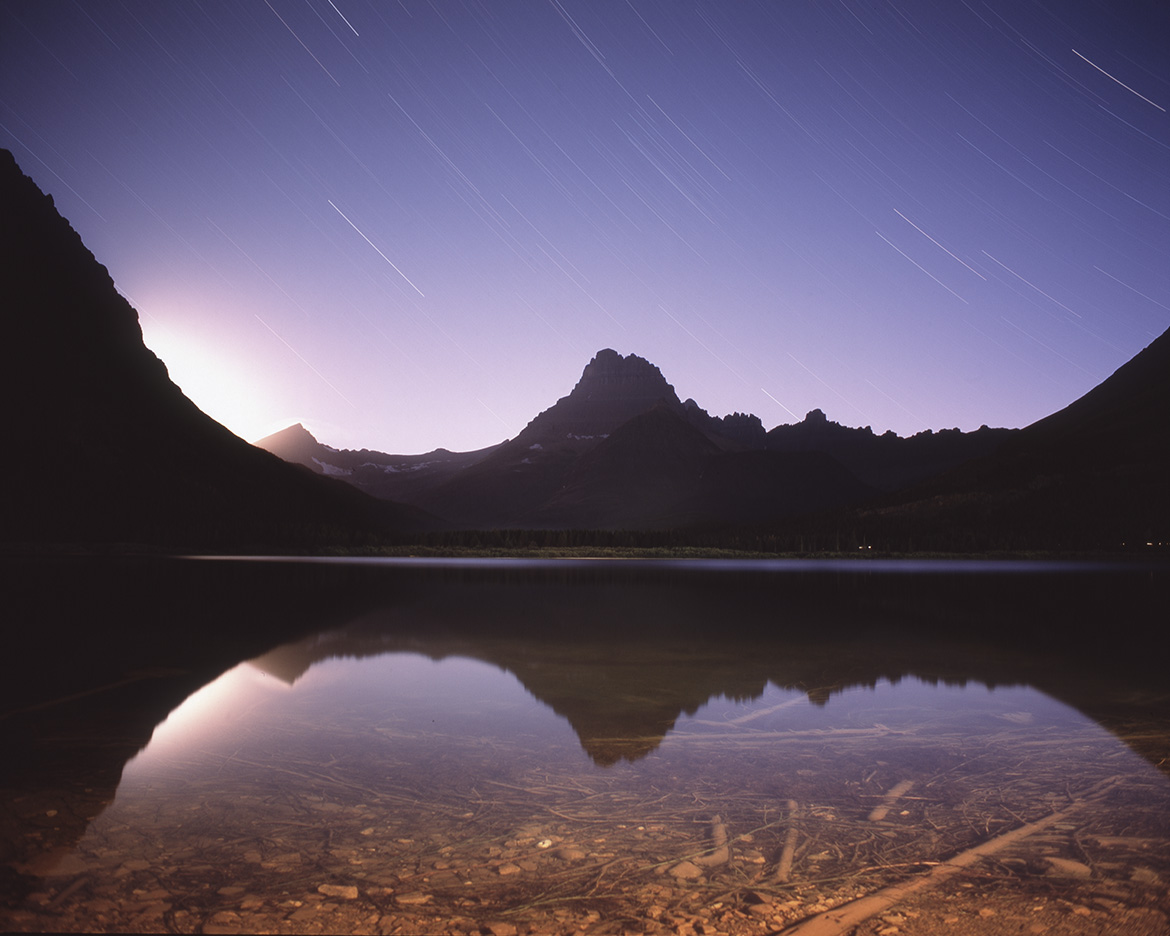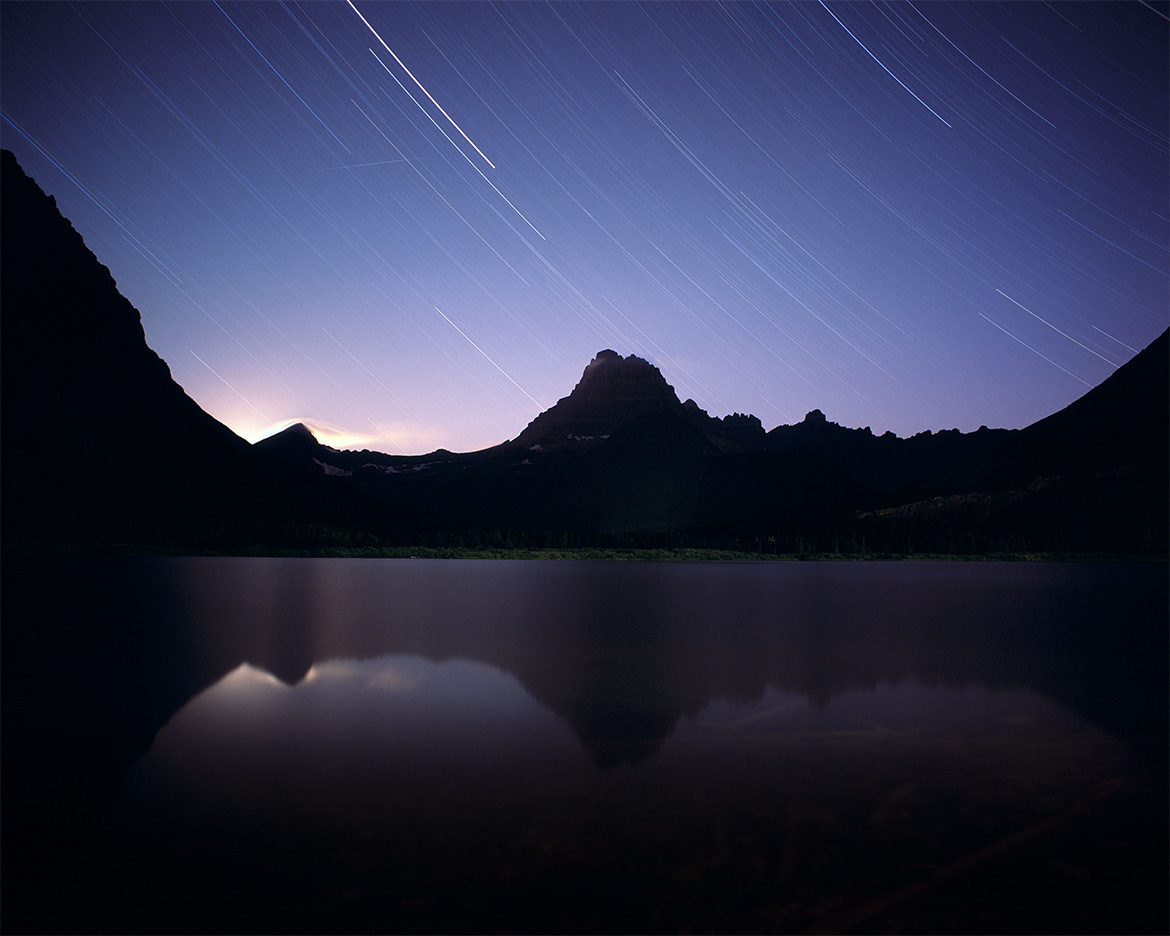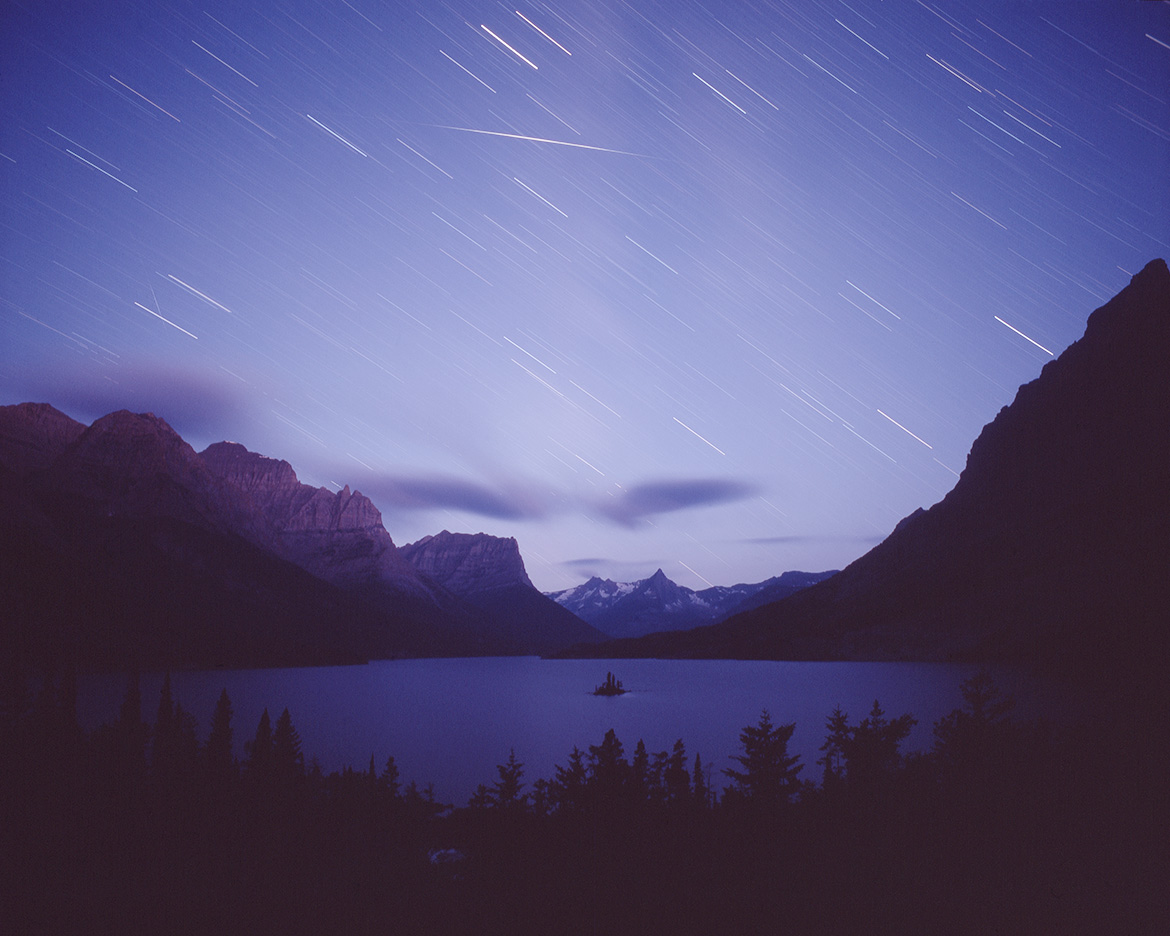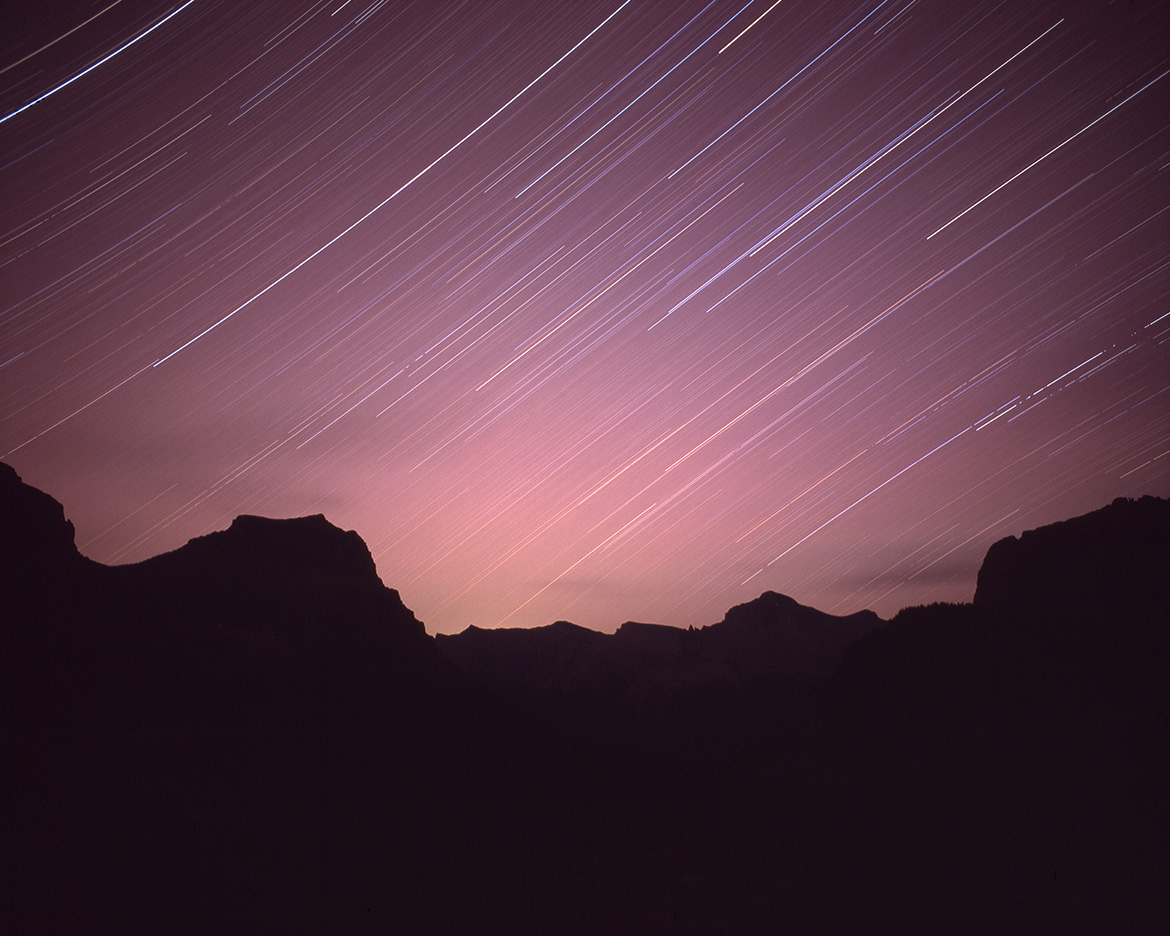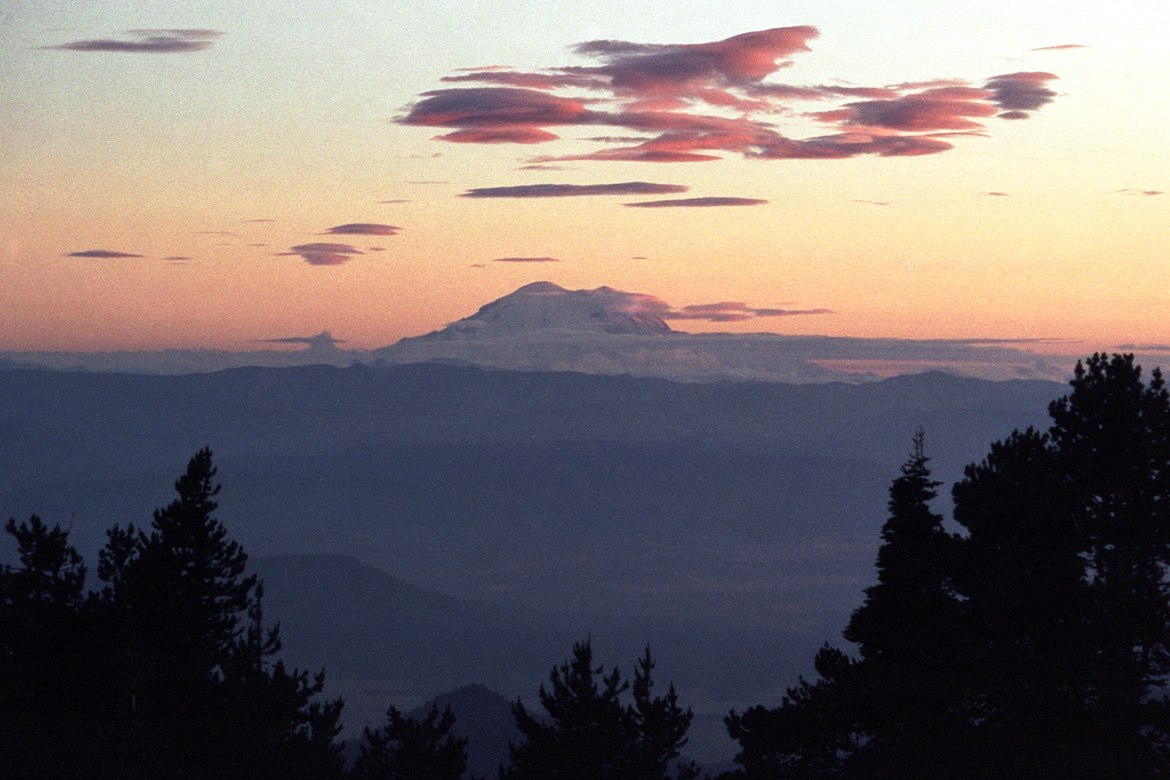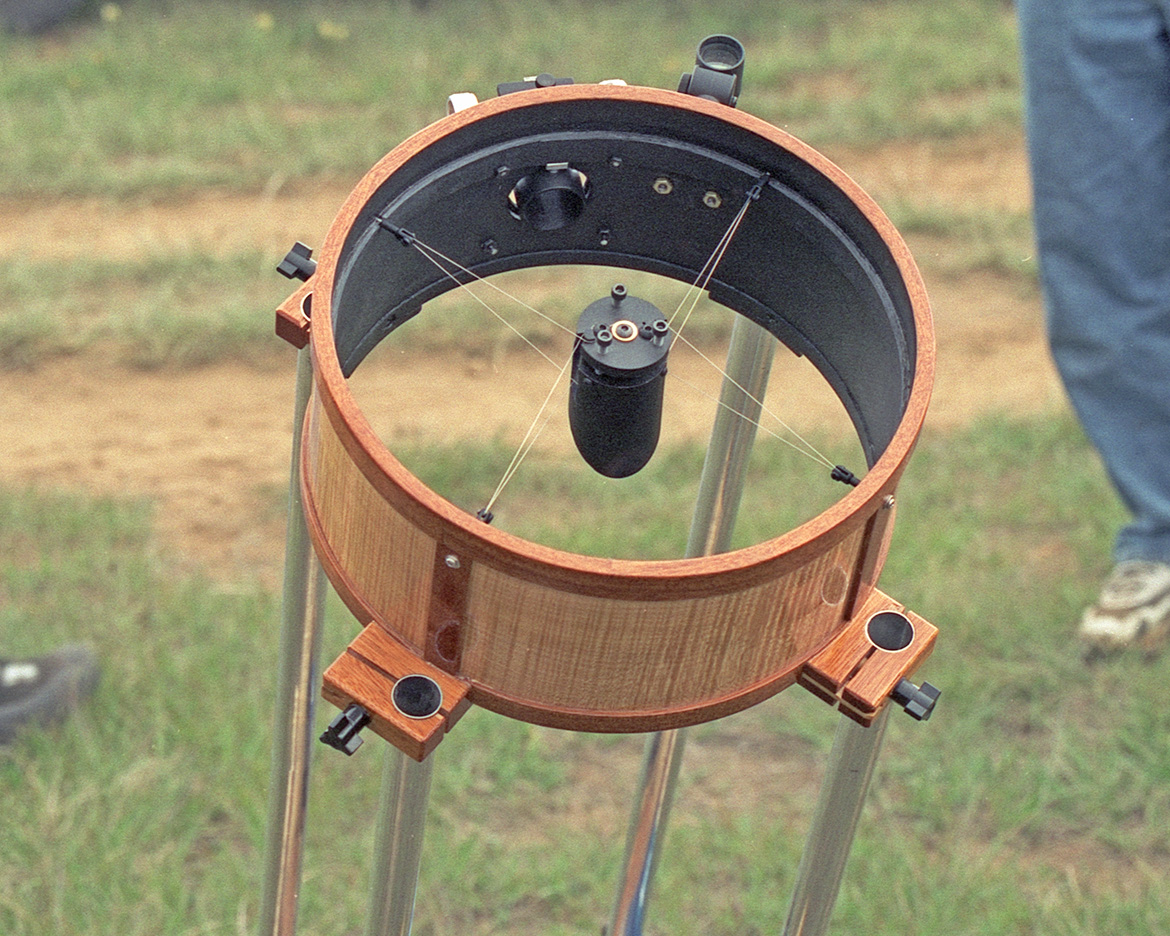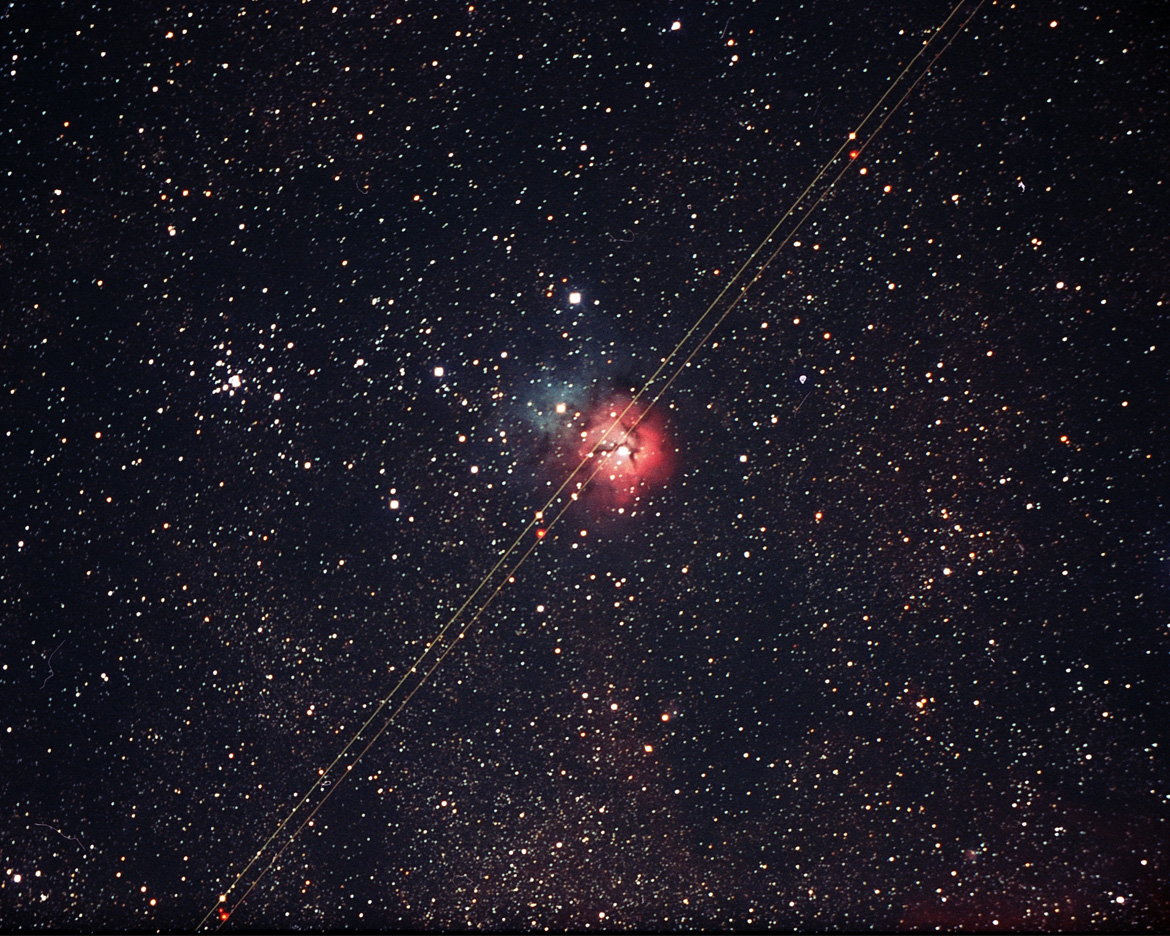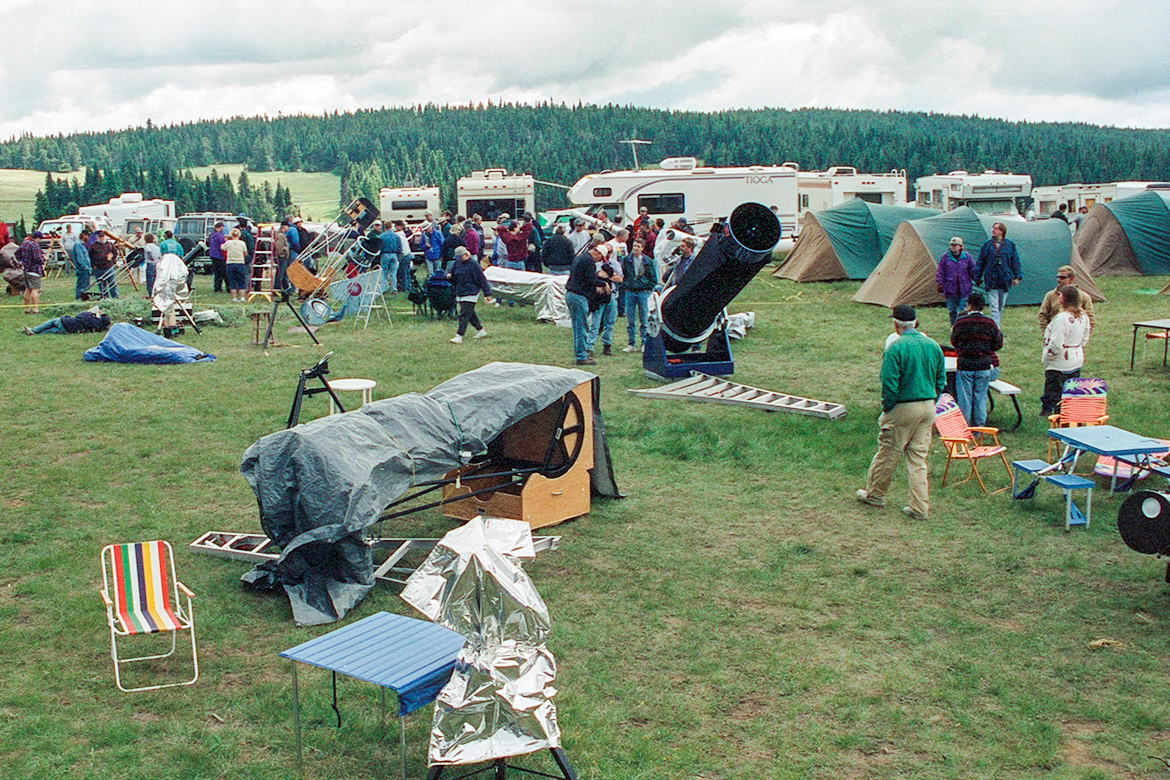4.1 Sabbatical Hiatus
The night at Many Glacier would be the last for my night sky photography for several weeks as I now was scheduled to meet my family in Seattle for a more conventional vacation. In addition to the usual outdoor camping and hiking activities we typically seek, this time there was an additional agenda.
My son, urged and aided by my wife, had selected several colleges to consider for that distant (to him) time when he would once again be called a freshman. Somehow, he had arranged that the list contained no schools within a 500-mile radius of our home, making the process of visiting their campuses a large undertaking. Several of the candidates however were clustered in the northwest states, and we had devised an itinerary to intermix campus tours with our other activities.
So for the next two weeks I would have little opportunity to aim my cameras at a dark sky. But it was getting more and more difficult to do this anyway, as the moon dominated the sky until late each night. If I thought the wait for the moon to set was long at Many Glacier, it would only get longer from here on out.
I made my way across the panhandle of Idaho, and once again across the desert of Washington, but this time crossing the Cascades into the lush land to their west. I had errands and duties to perform in preparation for reuniting with my family, including finding a place I could trust to develop my film- both E6 and C41 type rolls. Seattle was large enough to meet this requirement, and I would get a peek at my latent images turned real. That peek contained setbacks and failed exposures, as usual, but also some unexpected and enchanting images.
After the college campus touring circuit came to an end, and with my son relieved to be done with it, we aimed the overloaded minivan east of Portland to the Mt Hood Recreation Area.

